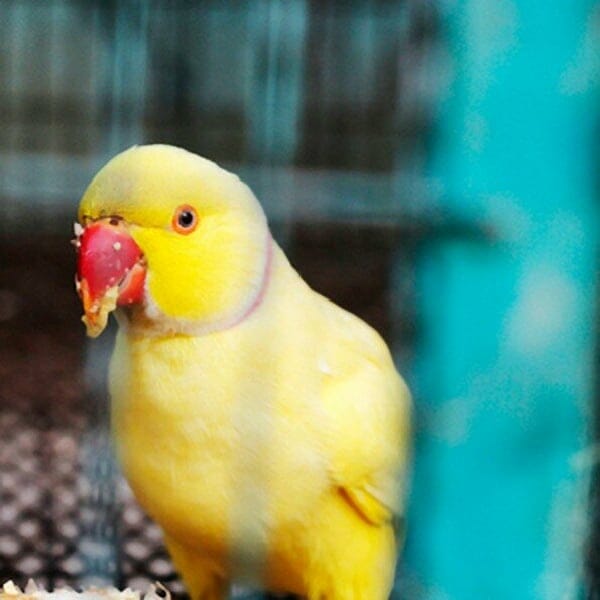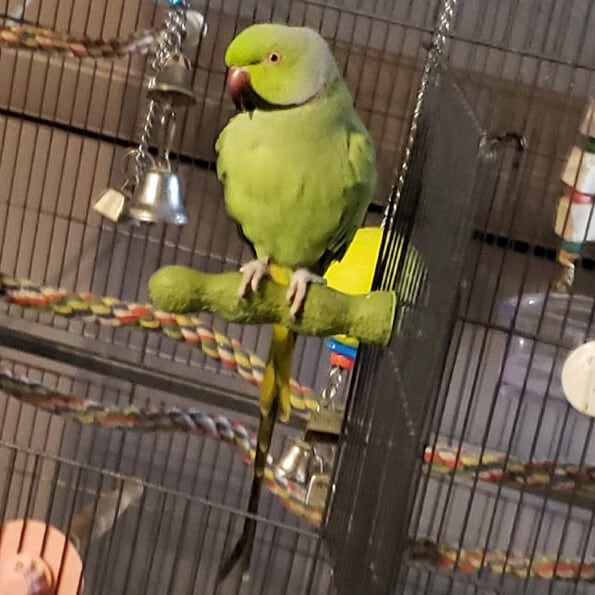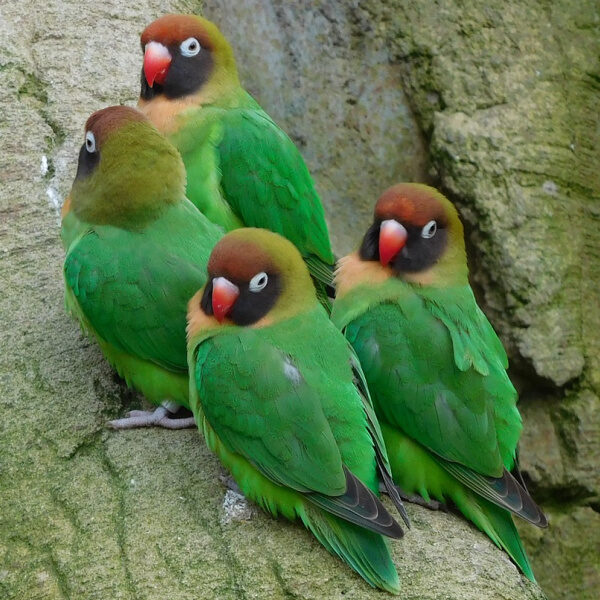Last Updated on by Mitch Rezman
From: Sharon M.
Date: Thu, Aug 4, 2016, at 7:06 PM
Subject: two separate pieces of advice needed: ringneck parrot-biting and unsalted sunflower seeds
To: “[email protected]”
Sunnie- not sure if a male/female (DOB=4/27, took him/her home 6/27) and is a little over 3 mos. old now.
I held her a few times @ the owner’s shop starting @1 1/2 mos. old while she was still being hand-fed.
I brought her home when she began to eat (pellets) on her own.
She was cuddly, would snuggle in my hands and sit on my shoulder at length.
Recently, when I approach her cage, put my finger out and say “step up”, Sunnie lunges at me and BITES my finger a few times (and draws blood).
WHY? When I give her (all are raw) a sugar snaps pea, a slice of a baby carrot, or a kernel of corn -she takes it and eats it in my hand.
Why is she biting?
Are ringnecks territorial?
Also, I give him/her a “treat” (unsalted sunflower seed)-maybe 5-10 throughout the day, which she loves.
The owner of the pet shop said sunflower seeds are “no good because they have a high-fat content.”
Is that true and are they a no-no?
Please give me your advice on both of the above.
I have another 4 mos. old male ringneck who never did/does the biting.
They’re both in separate cages, with their doors open.
They “socialize” with each other; the male chases Sunnie on the living room rug- no attacks, hurts, etc. while they “play”.
Please respond when you can. I will surely appreciate your wisdom and advice.
Sincerely,
A well bitten…Sharon
Hi Sharon, Thanks for contacting Windy City Parrot with your questions.
Mitch has been tied up with an important project and asked me to help you.
You have several dynamics going on with your two ringnecks.
If you are reaching into Sunnie’s cage when you get bit, then s/he is just protecting her territory. Let Sunnie come out on her/his own and then request the “step-up”.
Training a behavior like “step up” is best done away from the cage to prevent territory issues.
You can teach Sunie to step up onto a spare perch when inside the cage to prevent bites.
Also at about 3-6 months parrots tend to go through a stage of testing how hard they can nip before it is a “no-no”.
Wait until Sunnie comes out of the cage by her/himself and then ask Sunnie to step up. My African Grey was taught “gentle” because when he takes my finger in his beak, if he gets a bit rough, I simply say “gentle” and he releases the pressure.
When you get nipped hard, remove yourself from Sunnie’s sight immediately for 2 minutes or so.
The only discipline birds understand is the removal of attention.
Soon Sunnie will learn not to bite as much, but when you enter the cage with your hand, the bird is frightened or someone is paying you too much attention, you will likely get bitten.
Nips are simply normal behavior in these situations, so avoid picking Sunnie up or take her/him back to the cage if already on you if one of these situations is about to arise. Learn Sunnie’s body language and you’ll soon be able to notice clues that a nip is coming and can avoid the blood loss.
Sunnie may be considering the other ringneck as a flock member and as a result, has begun to consider you an outsider.
This often happens when there are two birds of the same species in a home.
You mentioned not knowing Sunnie’s sex.
Feather factoid: A male Indian ringneck’s ring will start to present at about 18 months, one-feather-at-a-time.
With these behavioral issues, you may not want to wait.
Having two birds of the same species in your home, I strongly suggest you learn the gender with a simple home DIY mail-in DNA test kit.
With two birds of the same species in your home, I strongly suggest you learn the gender with a simple home DIY mail-in DNA test kit.
You can find the inexpensive kit here: DNA Kit.
If the two birds are a potential pair, you may experience some real challenges during breeding season next year or so.
You mentioned you are only feeding Sunnie raw veggies to supplement the pellets.
You may find s/he also enjoys them lightly steamed. Birds enjoy the different textures.
Let’s address the question of whether sunflower seeds are a “no-no”.
Yes, sunflower seeds are high in fat and if mixed into some birds’ food on seed and supplement diets they will pick out just the sunflower seeds, refusing to eat all the other nutritious food in their dish, even the fruits, and veggies.
The addiction to sunflower seeds is quite common and has resulted in improvements in quality bird food lines that have added blends like Safflower Gold No Sunflower choices.
However, you mentioned Sunnie eats a pellet diet and you are giving her sunflowers only as treats.
Sunflowers are great for treats and perfect for training sessions while in the “perform for food” stage of training a new behavior.
A lot of sunflower seeds is a “no-no” but a limited amount as a treat is just fine.
I’d suggest limiting it to 5-6 on a normal basis and never more than your limit of 10.
You might consider skipping a day and using other treats as well. Young birds of all species love a bit of millet spray as a treat or give her a bit of fruit such as a grape cut in half, a small slice of apple, or some banana.
I hope this helps, Sharon. If we can offer solutions in any other way, please let us know.
Mitch & Catherine
Author Profile
Latest entries
 The Traveling BirdJune 26, 2025Can You Name 5 Parrot Species That Are Living Wild in the USA?
The Traveling BirdJune 26, 2025Can You Name 5 Parrot Species That Are Living Wild in the USA? Bird BehaviorJune 26, 2025How is it Parrots Are Problem Solvers Social Animals and Even Use Tools?
Bird BehaviorJune 26, 2025How is it Parrots Are Problem Solvers Social Animals and Even Use Tools? Bird & Parrot AnatomyJune 25, 2025How a Tiny Chemical Modification Makes Parrots Nature’s Living Paintings
Bird & Parrot AnatomyJune 25, 2025How a Tiny Chemical Modification Makes Parrots Nature’s Living Paintings PigeonsJune 20, 2025How Do Parrots Thrive in Cities Outside Their Native Habitats?
PigeonsJune 20, 2025How Do Parrots Thrive in Cities Outside Their Native Habitats?





